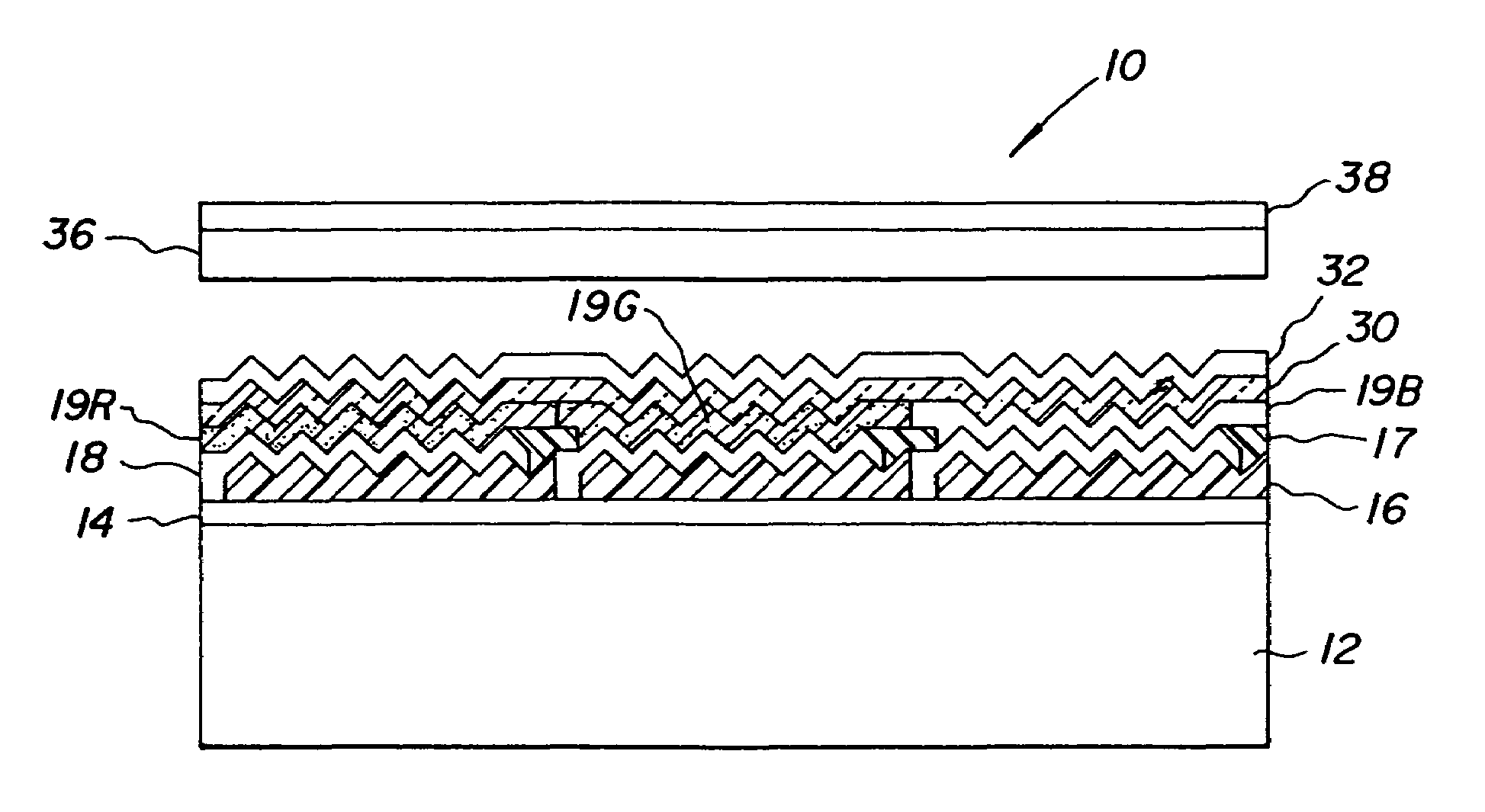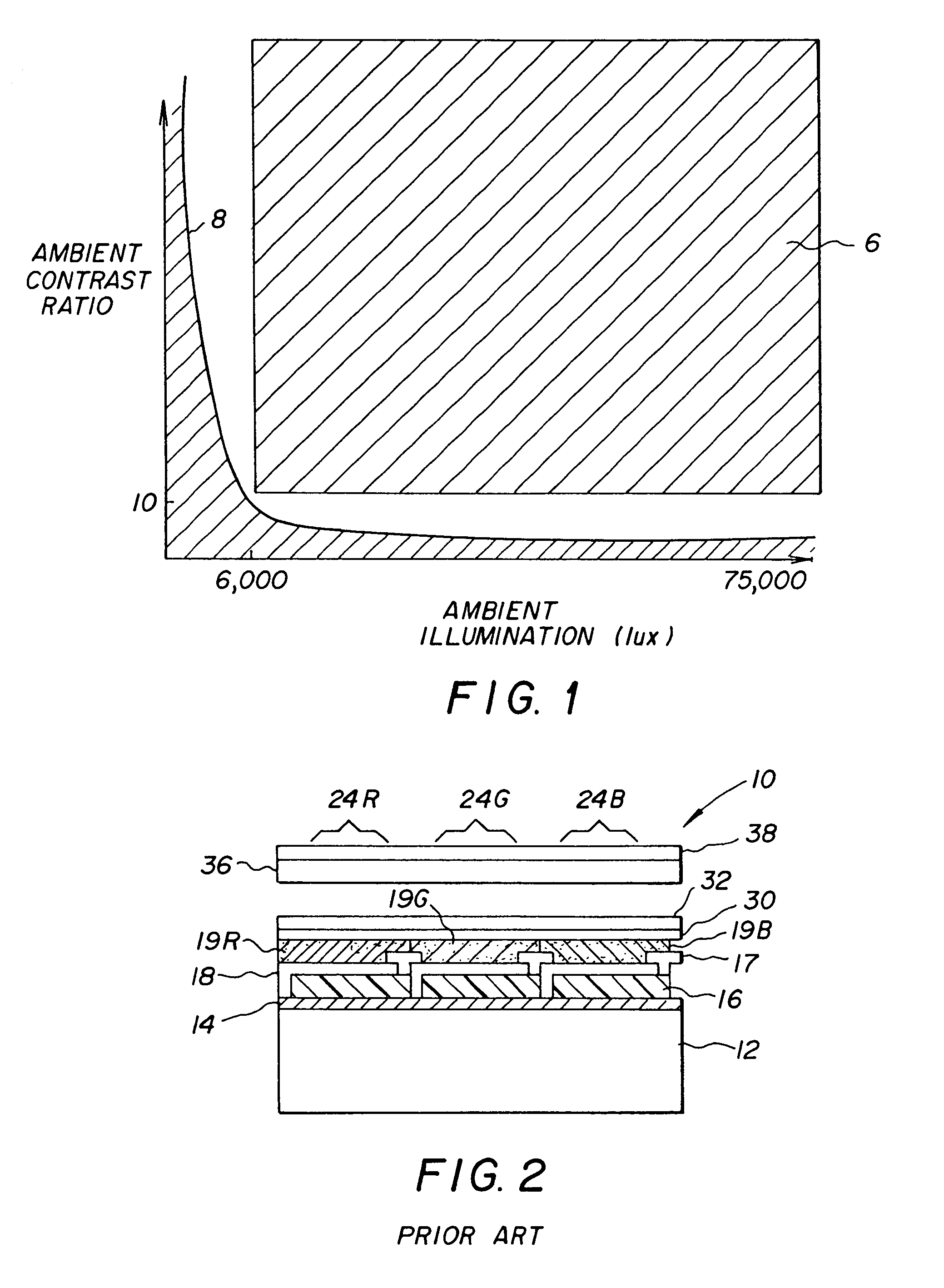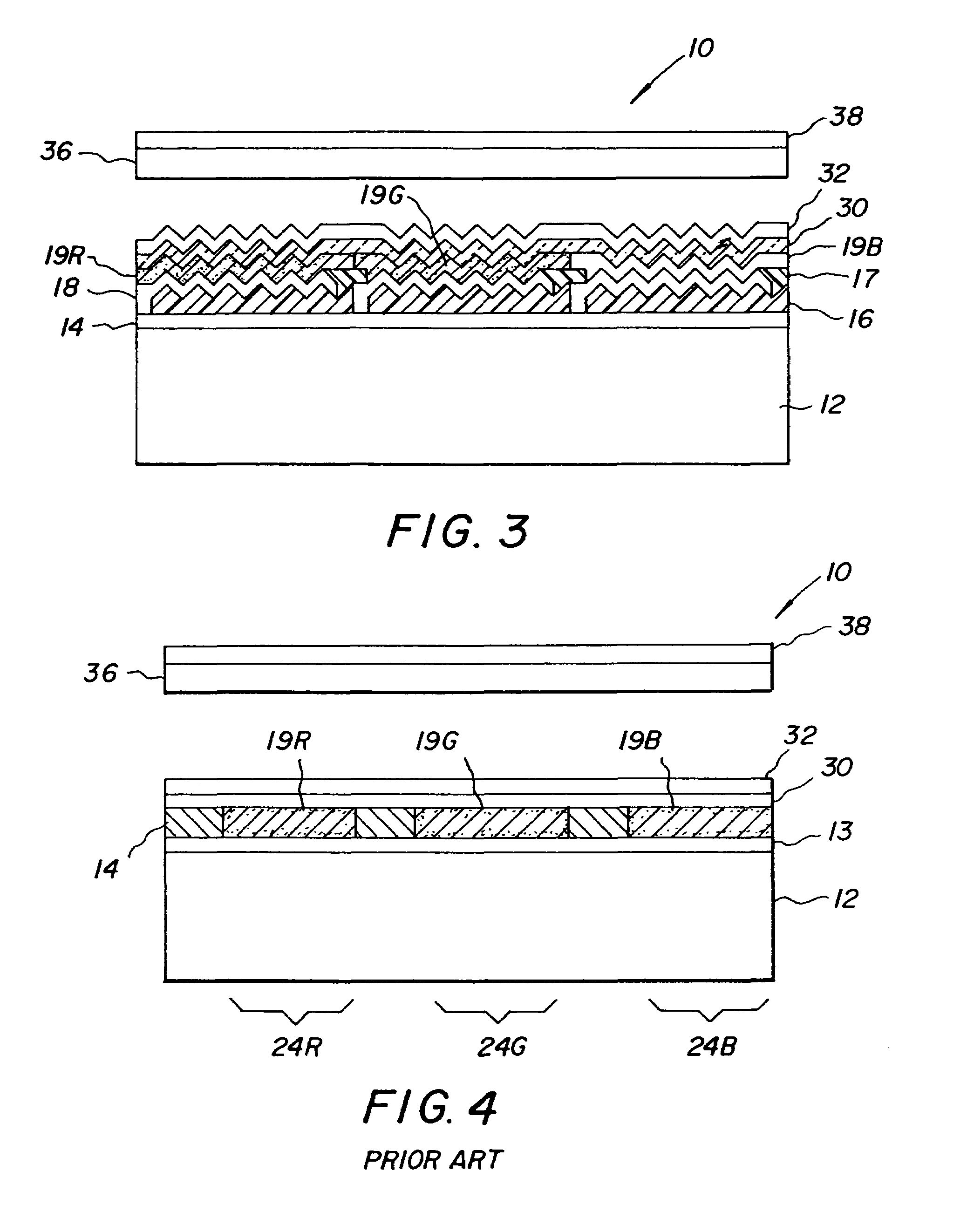Organic light emitting diode display
a light-emitting diode and display technology, applied in the field of organic light-emitting diode displays, can solve the problems of reducing the life of the display, luminance of the display, and reducing the ambient contrast ratio
- Summary
- Abstract
- Description
- Claims
- Application Information
AI Technical Summary
Problems solved by technology
Method used
Image
Examples
Embodiment Construction
[0020]An OLED display according to the present invention has an ambient contrast ratio greater than ten in an ambient illumination greater than 6,000 lux at an average power of 100 milliwatts or less per square centimeter of display area. Referring to FIG. 1, the shaded area of the graph labeled 6 represents the operating ranges of display devices according to the present invention. Prior art OLED display devices operate in the range labeled 8.
[0021]Referring to FIG. 2, a prior art top-emitting OLED display device 10 includes a substrate 12, and a thin-film transistor (TFT) active matrix layer 14 comprising an array of TFTs that provides power to OLED elements. A patterned first insulating layer 16 is provided over the TFT active matrix layer, and an array of first electrodes 18 are provided over a planarized insulating layer 16 and in electrical contact with the TFT active matrix layer. A patterned second insulating layer 17 is provided over the array of first electrodes 18 such th...
PUM
| Property | Measurement | Unit |
|---|---|---|
| reflectance | aaaaa | aaaaa |
| reflectance | aaaaa | aaaaa |
| heights | aaaaa | aaaaa |
Abstract
Description
Claims
Application Information
 Login to View More
Login to View More - R&D
- Intellectual Property
- Life Sciences
- Materials
- Tech Scout
- Unparalleled Data Quality
- Higher Quality Content
- 60% Fewer Hallucinations
Browse by: Latest US Patents, China's latest patents, Technical Efficacy Thesaurus, Application Domain, Technology Topic, Popular Technical Reports.
© 2025 PatSnap. All rights reserved.Legal|Privacy policy|Modern Slavery Act Transparency Statement|Sitemap|About US| Contact US: help@patsnap.com



